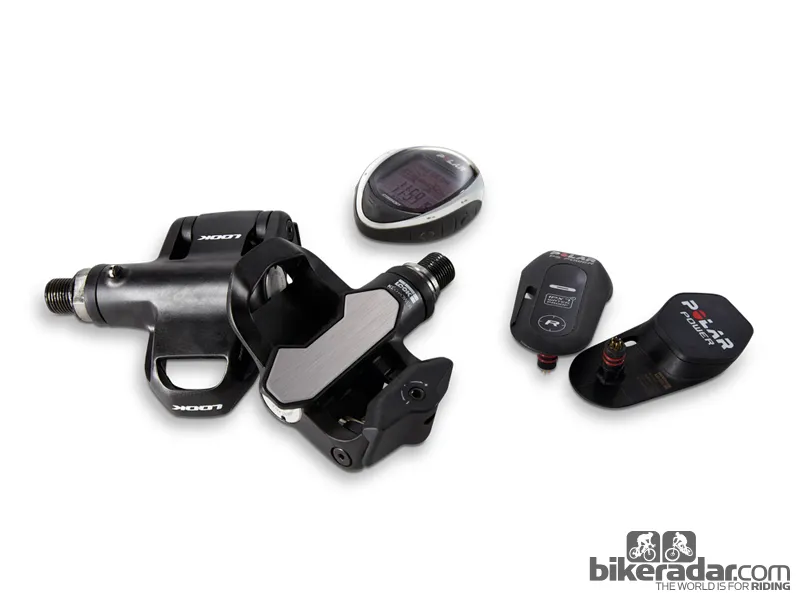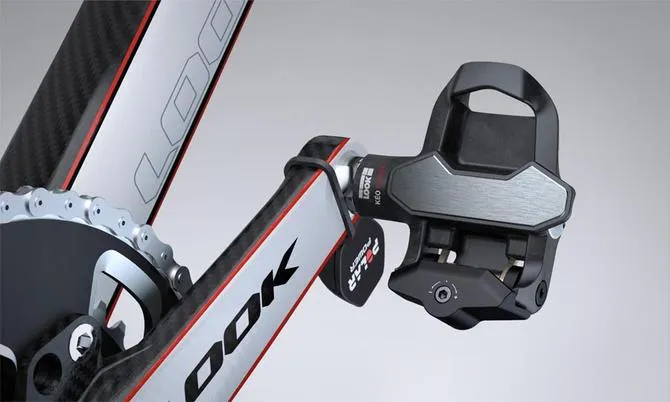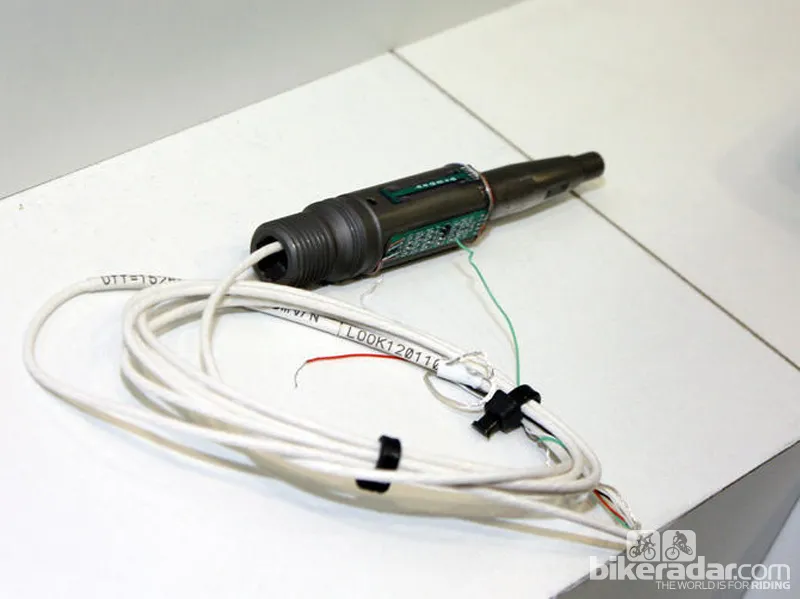The Look KeO Power pedal, developed in conjunction with Polar, is the first pedal power meter to make it to market. After testing a set for a few months, we think they pass muster for a first-generation power meter. We'd like to see some improvements further down the track, though, and at £1,500 for the pedals alone, they're not cheap.
The system is relatively simple – eight strain gauges located in the axle measure pedalling force, while a reed switch in the pedal body measures cadence. These recordings are then sent to a Polar computer using Bluetooth Low Energy (BLE) via a transmitter that connects to the inner side of the crank arms. The computer translates the data into power, even breaking it down into left/right leg contributions.
Our pedals weighed 344g, which, combined with 36g for the sensors and 40g for the computer, makes for one seriously light power meter.
The installation
The good thing about the Look KeO Power pedals is that you can install them yourself. Be prepared to spend some time doing so, though, as it's not as simple as screwing on a set of pedals. The pedals come with washers and lock nuts as well as an alignment tool. There's a notch on the end of the axle that you need to align so that it's pointing forwards when the crank arm is in the 12 o'clock position. Get this wrong and your power measurement will be out, as we found on more than one occasion.
In practice, we found that the 8mm Allen key alignment tool didn't really help, as there was too much freeplay between it and the drive hole. Also, the lock nut had to be really tight in order to prevent the axle coming loose during the ride, messing up the alignment of the transmitter. Once the pedals are correctly aligned, the transmitters just push on and are secured with zip ties.
The left transmitter acts as the master in the whole setup, and can be switched on and off via a small button. When you first use the Look KeO Powers you need to set your crank length. You have a choice between 170mm, 172.5mm, 175mm and 177.5mm. Zeroing happens automatically when you turn the transmitters on, although it's impossible to check against any sort of baseline value.
Like most power meters, the Look KeO Power pedals will experience some drift in readings due to temperature changes, although Look say that it's not large. If you're concerned then you can re-zero after 20-30 minutes by switching them off and on again. This means you have to get off the bike, though. We found we got better results by not zeroing them after we'd started (see below).
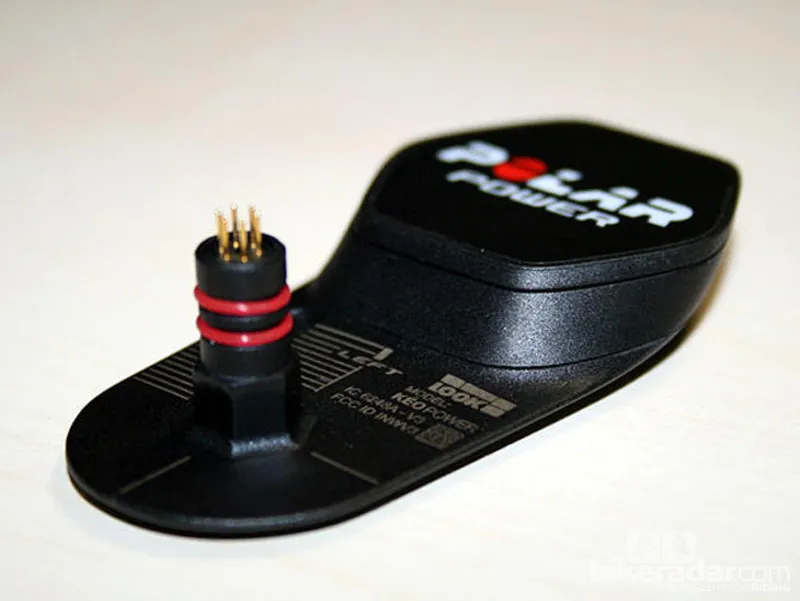
Sensors sit on the inside of the crank arm
The measurement
The pedals measure power and cadence, which means you'll need a speed sensor and heart rate monitor if you want to know speed, distance, time and heart rate. The Polar computers will measure altitude too – we used a CS600X for this test, but the KeO Power system will also work with a CS500 and CS600.
We were interested in power, primarily, and after we worked our way through all the teething problems mentioned above, we were mostly happy with the numbers we were getting. We used a PowerTap SL+ hub-based power meter to do comparative testing both indoors and on the road. The PowerTap had been checked against a Computrainer in ergo mode, as well as a static weights test to ensure calculated torque was the same as measured torque.
Using a stationary trainer indoors, in controlled conditions, riding at different power levels, we found the wattages we were getting from the Look KeO Power pedals matched our PowerTap to within 1-2 watts.
Outdoors, we found a similar correlation but only if we relied on just one pre-ride zero and didn't stop to zero mid-ride. If we did the latter, we saw our Look KeO Power numbers shoot up by roughly 10 precent compared to our PowerTap.
We verified that it wasn't our PowerTap reading low by comparing power and speed over laps of a known circuit. All things being roughly equal, it shouldn't be possible to go significantly slower while putting out more power than you did on the previous lap. We're not exactly sure why this was happening, but it's something to be aware of if you're considering the system.
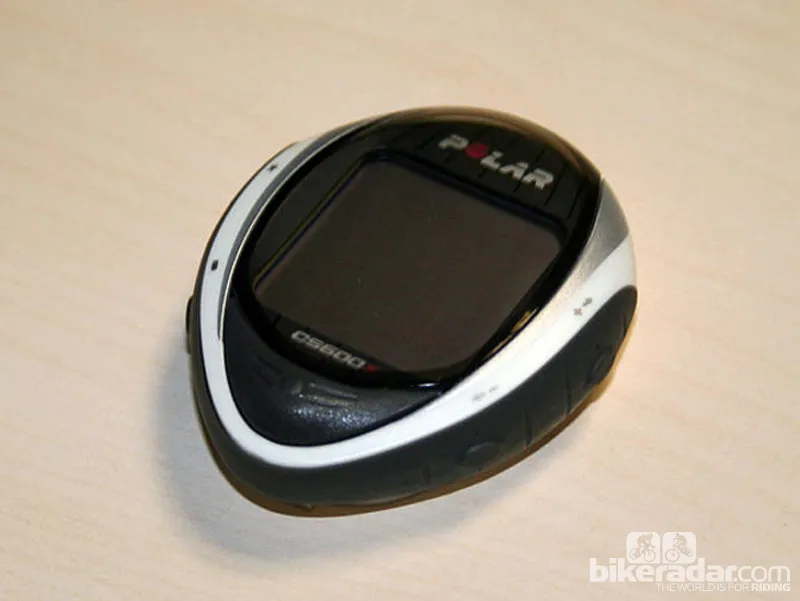
Polar's CS600X computer
The software
Data analysis has to be done via Polar's ProTrainer 5 software, which gives you a lot of data and analysis options but isn't as easy to use as the market-leading WKO+ 3.0. We're told that ProTrainer 5 is due a major upgrade this year.
The same goes for Polar's computers, which have some nice functions but lack the fields we're used to working with on the Garmin Edge and CycleOps Joule head units. Unfortunately, the Look KeO Power system isn't ANT+ compatible, which means it can't talk to the latter head units. In principle, it can communicate with other BLE devices, such as the Apple iPhone 4S, without as big a battery drain as ANT+.
The verdict
Look and Polar have brought an impressive product to the power meter market, the main advantage being the light weight and the transferability between different bikes.
We'd like to see an easier method of ensuring that the transmitters are aligned correctly, a better way of keeping the zero offset in check during a ride, and the price come down. This would mean the Look KeO Power system could be truly competitive with existing power meters, as well as the Garmin Vector when it eventually surfaces.
